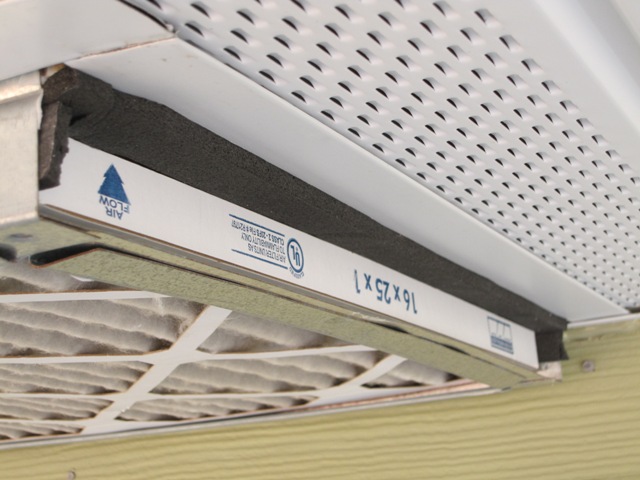October 7, 2009
The house will be ventilated with a heat recovery ventilator (HRV). In cold weather, it will transfer most of the heat from the warm outgoing air to the cold incoming air, saving roughly 70% of the heat that would otherwise be lost. In warm weather it does the opposite, cooling the warm incoming air to reduce unwanted heat gain. The HRV has 6-inch ducts for incoming and outgoing air, but our calculations of airflow resistance indicated that using 7-inch ducts throughout the house would significantly reduce the energy needed to move the air. In other words, by using 7-inch ductwork we can use a lower fan speed on the HRV to get the same airflow, reducing its energy consumption compared to what it would take if we used 6-inch ductwork. We installed intake ducts to remove stale air from the kitchens and bathrooms, and supply ducts to provide fresh air to the bedrooms and living room. The 7-inch ducts terminate at 8-inch openings like this:
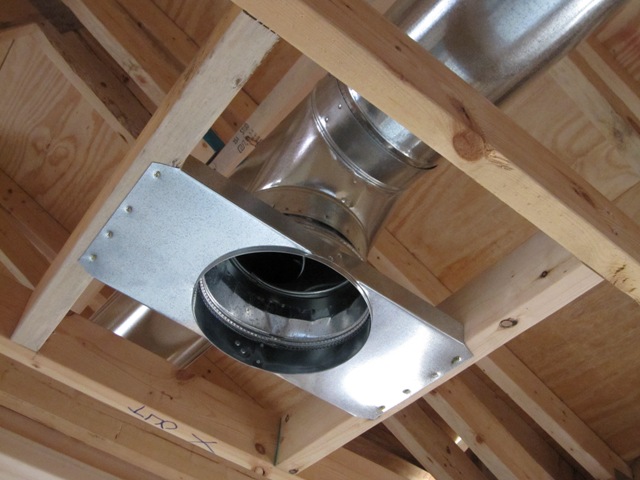
October 8, 2009
As soon as the ducts were installed, we sealed up the openings to keep out dust during construction.


Dan and Liz applied duct mastic to all of the joints in the ductwork and to the seams around the elbows. This seals them better than duct tape, and it will prevent heat loss into the attic as well as prevent dust infiltration from the cellulose attic insulation.
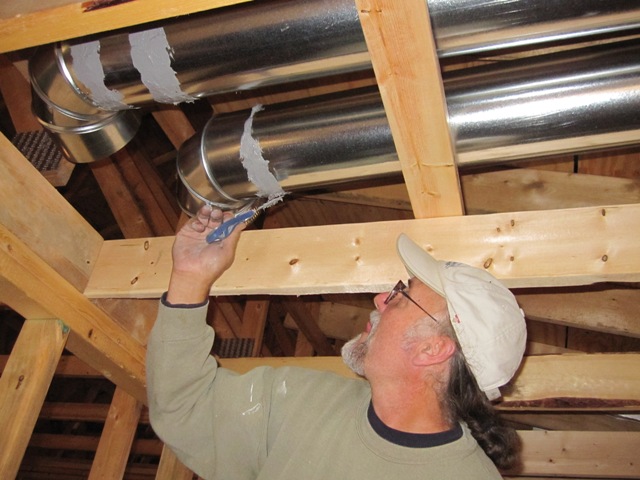
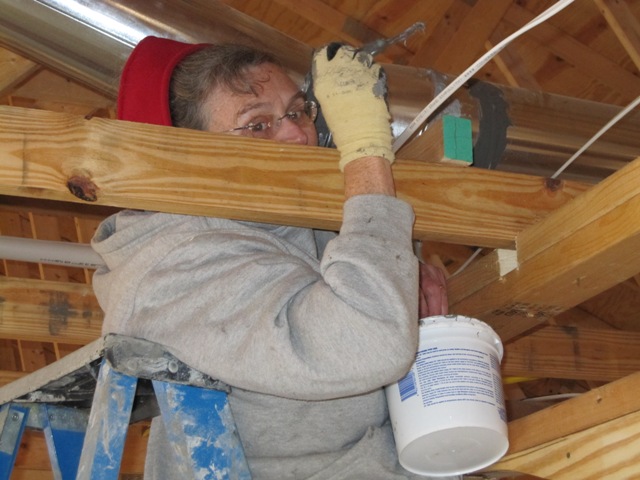
December 20, 2009
The fresh air intake is located under the eave on the north side of the house, well away from any chimneys and exhaust outlets so that it will provide fresh air. After making the intake plenum out of plywood, Dan lined it with aluminum flashing and caulked all the seams. Then we sealed it up during construction to keep dust out.

March 2, 2009
This shows the Lifebreath 155 MAX heat recovery ventilator, installed in the mechanical room. The short insulated sections are 6-inch flexible ducting, which reduces noise from any vibration that the HRV might otherwise transfer to the metal ducts. The insulation here is for noise reduction, not for preventing heat loss, and the ends will be taped up shortly. The gauges mounted on the wall to the right of the HRV let us monitor the airflow, and they help ensure that the intake and exhaust air flows are balanced. At maximum speed we get about 120 cubic feet per minute, which is well above the minimum 90 CFM that is required. The intake gauge will also indicate when the filter needs to be changed, because it will show a reduction in airflow as the filter gets dirty.
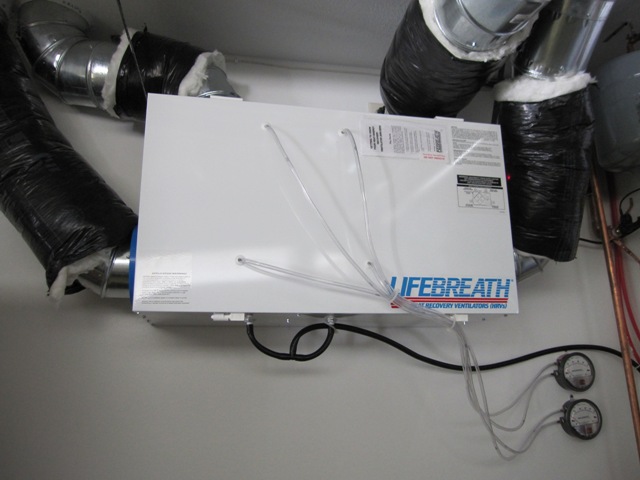
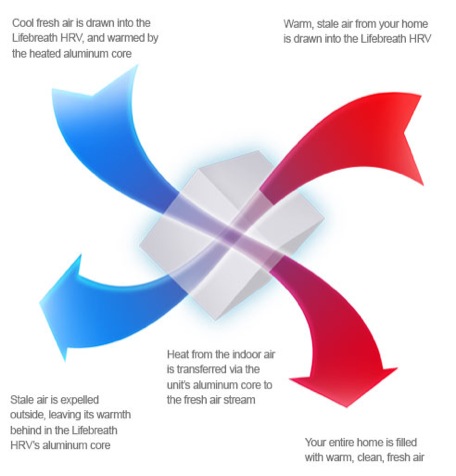
March 13, 2009
The photos below show the Accumulair Diamond air filter and how it fits into the intake housing under the north soffit. The large filter area, compared to the 7-inch duct diameter, means that we shouldn’t have to change it very often. The filter is rated MERV-13, which is about as good as one can get in a furnace-type filter.
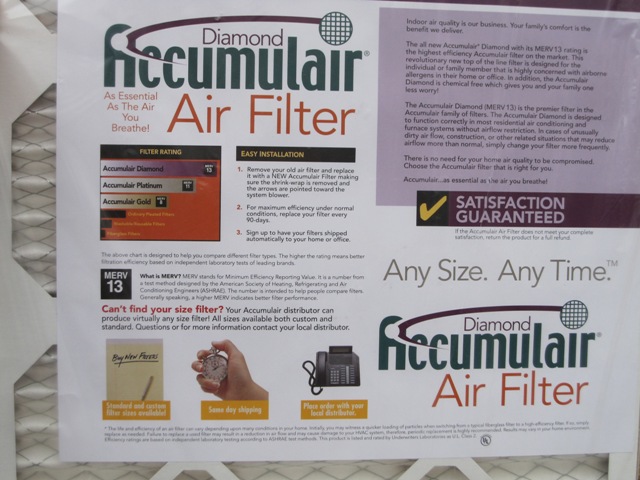
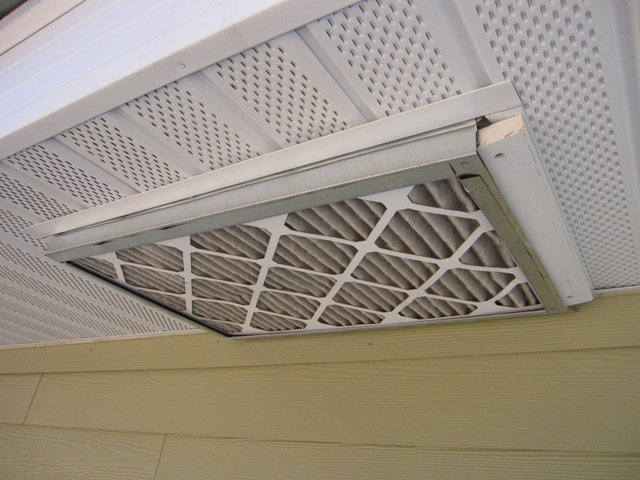
Foam weather stripping prevents air leakage around the edges of the filter and the sealing block shown on the right in the photo above holds it snugly against the weather stripping.

